Gone are the days when people reached a certain age and gave up on physical activity.
Today’s ageing population, coupled with an increased knowledge of the benefits of exercise, has seen more people than ever flock to gym halls and fitness centres, to prove that age is just a number.
We speak to a series of inspiring people at the forefront of this movement, to find out why exercise is essential for those over 50.
Chris Zaremba, founder of Fitness Over Fifty and world champion fitness model
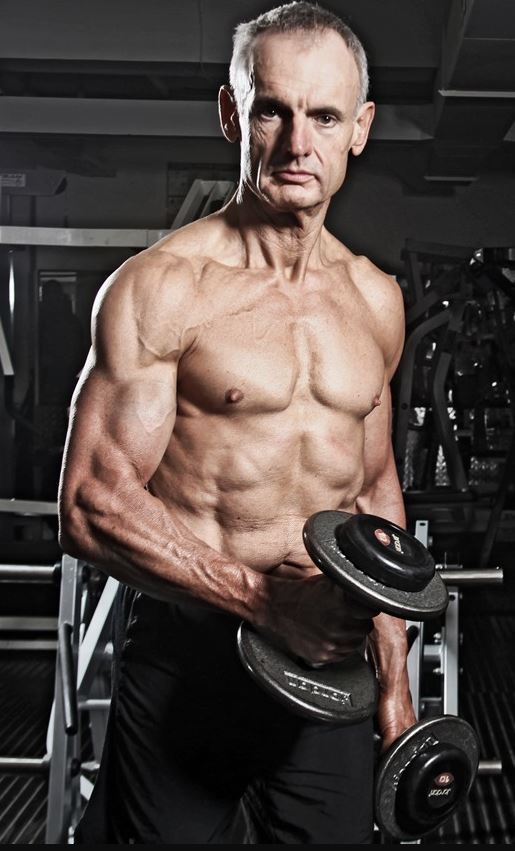
When Chris Zaremba turned 50, he weighed around 18 stone. He was a borderline type-ll diabetic with a morbidly obese Body Mass Index of 35. Chris had to change – and change he did.
Today, Chris is a 12-stone world champion fitness model who has 18 trophies to his name, has run multiple marathons and has competed in a Muscle Beach competition in California.
Chris’ journey has attracted widespread attention and his story has been featured in the Daily Mail, The Telegraph and Daily Mirror among others.
But what’s been behind his incredible turnaround? We spoke to Chris to find out.
Chris’s transformation
Fitness Over Fifty first started when I was 50, funnily enough! Up until then, I’d essentially been a slob. I didn’t exercise or play sports, I ate all the wrong foods and I gradually piled on the pounds since leaving school.
I went to my GP and did blood tests. I had very high blood cholesterol and blood sugar levels, so was borderline diabetic. I also had virtually no aerobic capacity. The GP told me that, unless I lost some weight and changed my diet, I wouldn’t make 60.
I took that warning to heart and adopted a fitness regime. I went to the gym every morning and started eating more healthily. This was 12 years ago and YouTube and fitness blogs didn’t exist back then, so I bought some calorie counting books and tried sticking to 1800 calories a day.
I then started going to the gym next door to the office I was working in at the time. I hit the cross trainer every morning for half an hour and the weight came off. From doing this, I managed to lose six stone over two years.
The watershed moment for me was about three or four weeks into my exercise programme. One morning, I couldn’t go to the gym because I was busy at work. I was disappointed I couldn’t go and I suddenly realised that, rather than doing this because the doctors told me to, I was doing it because I enjoyed it.
Learning from the best
After two years, I’d come down to 12 stone. I was in Los Angeles with my wife (gate-crashing her business trip) and I visited the Gold’s Gym on Venice Beach.
There was a sign asking if anyone was interested in receiving personal training, so I decided to go for it. I was assigned a personal trainer who turned out to be Rob Riches, a famous personal trainer who I’m still friends with to this day.
Rob said ‘Chris, you’ve done a fantastic job of losing all this weight, but you’ve also lost muscle tissue. You’ve lost weight rather than fat.’ He put together a programme which meant I could keep the fat off but build back some of the muscle I’d lost. I’d never lifted a weight before or done resistance training, so this was a real eye-opener for me.
From chatting to Rob, I also realised that, even though I’d only been eating 1800 calories a day, what was in my calories wasn’t good. I needed much more protein and green vegetables in my diet and needed to reduce my sugar and fat consumption.
Over the next two to three years, my weight stayed the same but my body fat came down from 30% to 15%, because I’d gained so much muscle. I then got into fitness modelling, competing in the over-50s category. I started winning competitions from aged 55 onwards and I recently won a Muscle Beach contest at the age of 60. Rob was there cheering me on, which was nice!
The last time I had my blood pressure tested, the doctor told me I had the blood pressure of a 45-year-old, which is fantastic considering I’m 62.
Fitness Over Fifty
I took early retirement from my job as a software salesman and got qualified as a fitness instructor, personal trainer and nutrition advisor. That’s how I earn my money these days.
My business is called Fitness Over Fifty because there are loads of personal trainers out there who set themselves up to train younger age groups, but not many who specialise in training older clients. I think I’m well qualified to train people over 50 because I was over 50 before I even knew what a gym was!
Over half of the UK adult population is over 50 and this is the half that’s got the most time, money and medical needs – yet it’s the half that does the least exercise. That’s quite scary when you think about it.
Most of my clients have seen a steady decline over four decades and gradually put weight on, like I did. I try to teach them that they can get the results they want, but only with patience and persistence. It’s not something I can achieve by just spending an hour with them here and there.
I always say to them ‘If you fall off the wagon, get back on it again’. If they have a bad meal, they think that’s the end of it, but it’s not – they can go again tomorrow.
Chris’s message for others
Nobody gets to the age of 55 or 60 without knowing that they shouldn’t be eating junk food and should be exercising more.
A lot of people over 50 give up on exercising if they’re not very active because they think it’s too late for them, which it most certainly isn’t. I’ve changed dramatically since turning 50 and I’m still changing and making progress now.
Unfortunately, we live in an obesogenic society which doesn’t encourage much physical activity. You used to push a lawnmower up and down a garden – now, we’ve got sit-on lawnmowers and gardeners will mow your lawn for you. We used to walk to the shops to buy items, now you can get these delivered to your home without having to move a muscle.
Little things like this epitomise the attitudes held by certain people that exercise isn’t important, but I’m proof that it is. I get upset when I see how few people my age are in gyms across the UK, because as I said, these are the people who need to exercise the most.
A lot of people my age are retired and they’ve got spare time which they could use to increase their quality of life. Exercise will add years to your life and life to your years.
Linda Berry, the 69-year-old fitness instructor
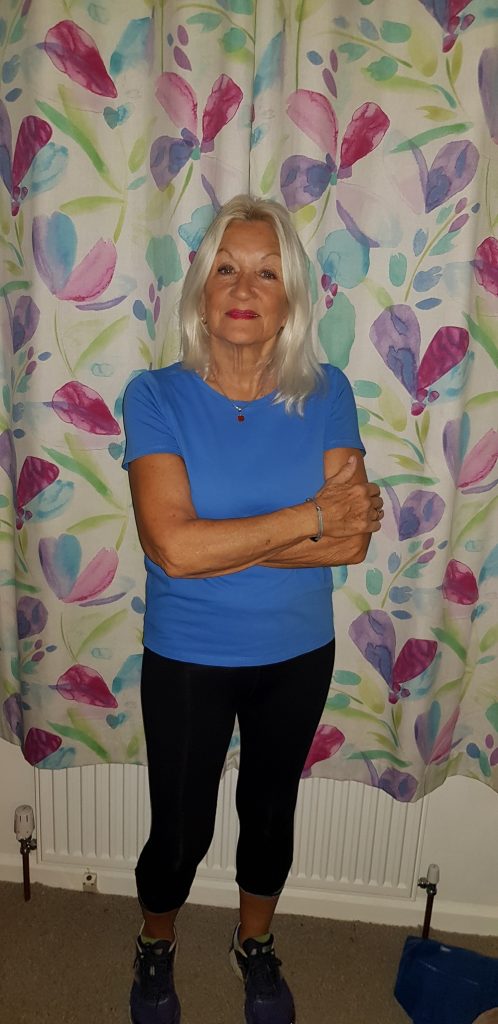
Linda is far from your everyday fitness instructor. At the age of 68, she studied to become a fitness instructor and now holds weekly exercise classes at her local community centre in Rose Green, Bognor Regis.
The classes are primarily targeted at people aged over 65 and most of the participants are in their 80s.
Linda, an Insure4Sport policyholder, talks to us about her venture into the fitness industry.
Linda’s inspiration
I’m from Chichester and moved to the Midlands, but I relocated back to Chichester to look after my parents towards the end of their lives.
My mother didn’t go out – my father wouldn’t let her. I bought her a mobility scooter and because he felt responsible for her, he wouldn’t let her go out on it. She just sat at home watching TV and as with anyone who does this, she ate all the wrong foods and put on weight.
When she passed away, my father also stayed at home. He didn’t want to socialise with anybody. When he passed away, I decided I wanted to do something for the other older people out there who feel isolated or alone. I wanted to set up a group for these people to meet, exercise and have everything that my mother never had.
I enrolled on the FABS Training Programme for seven months, learning about the bones, muscles, heart and lungs. I passed the physical exam and that’s how it all started.
Once I got qualified, I got some adverts printed and distributed them everywhere around Rose Green – the shops, butcher’s, post office and surgery. I found a hall next to the surgery, which is obviously a bonus given that the surgery wants as many of their patients to exercise as possible.
Linda’s classes
I do really varied exercises and fit as much as I can into an hour. My class members do box step-ups to work their quadriceps and hamstrings, the penguin walk to work their calf muscles and cha-cha dances for improved co-ordination.
I also incorporate games, using bean bags to quicken reactions and bands to strengthen the wrists and legs.
At the end, we sit around a table for tea, coffee and a chat. This also highlights any issues anyone has at home or medically, it’s very social and friendly and ultimately it’s fun.
It’s an eye-opener to see just how much fun my class members are having and how much they enjoy it. You can’t really understand it until you’ve got a class in front of you. There’s lots of laughter, there are smiles – I think the generation of over 60s are more prone to that than the younger generations. That’s why I think you get more satisfaction from working with them.
Having said all of that, my classes are not just for fun – they have a real purpose. They help with standing, sitting and free standing, all of which are essential whatever stage of life you’re at. They get the muscles working for everyday activities and keep people mobile.
The exercises are also beneficial from a mental perspective. They give people the confidence to walk outside, something my father was frightened of doing on his own in case he fell over.
Even from a personal point of view, I’ve benefited from the classes. I’m an active person anyway, but I’ve lost 6 pounds in 4 weeks from holding these classes, so it’s been successful all round. If it continues this way, I’ll host an additional class on another day of the week.
The success stories
One lady who attends my classes lost her husband two years ago. She didn’t know anybody and she was very shy. I introduced her to everyone and she’s so pleased she came along. It shows the classes are really working.
Another inspirational lady who attends my classes is Rose Shillingsford. She’s 85 years old and not only does she come to my classes, she also plays bowls and badminton every week and goes to pilates classes! She’s an inspiration and it’s amazing how active she is for her age. We could all learn a lot from her.
Linda’s message
I don’t feel old, I don’t look old, I’ve got a head of blonde hair and I’m learning to play golf outside of my classes. I’m also learning to play the piano and the violin. At this age, I don’t want to be still and sitting in a chair. I want to be active and I want other people who are my age and above to feel the same.
Rose Shillingsford, the 85-year-old fitness fanatic
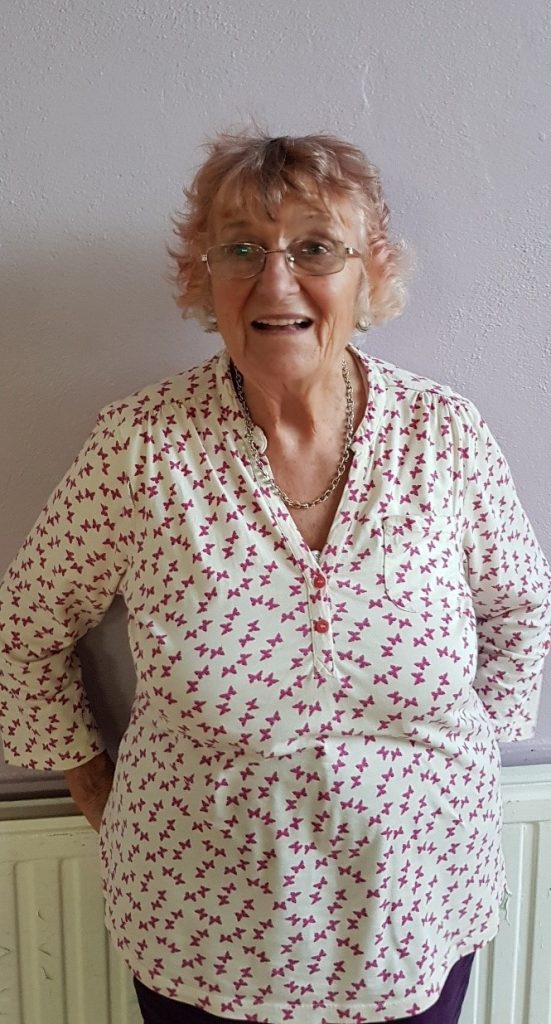
I saw Linda putting up a picture in her local shop and I started chatting to her about it. It seemed like a fantastic idea and I was very keen to get involved.
I’ve always been a strong believer in exercise. I exercise all the time and have done from a young age. I used to be very keen on cycling, I played tennis and over the last few years, I’ve taken up badminton, which I now play every week. It’s a great sport to take part in because it’s not too energetic, but you still feel a sense of reward from playing it. I wouldn’t say I’m the greatest badminton player in the world, but I enjoy it nonetheless!
It’s like the saying goes – if you don’t use it, you lose it. Anything that keeps you moving can only be good for you. There are more exercise classes for people my age than there ever have been and it’s lovely to see so many people over the age of 65 who are keeping physically fit and active and gaining a close circle of friends while doing so.
Rose’s message
The older generation of today don’t want to go into a home and have a carer looking after them. They want to keep going for as long as possible and people like Linda help us to do that. There are lots of opportunities out there for people like me and hopefully in future years there’ll be even more opportunities.
Ian Davis, commercial manager at Wellington Health and Fitness Club
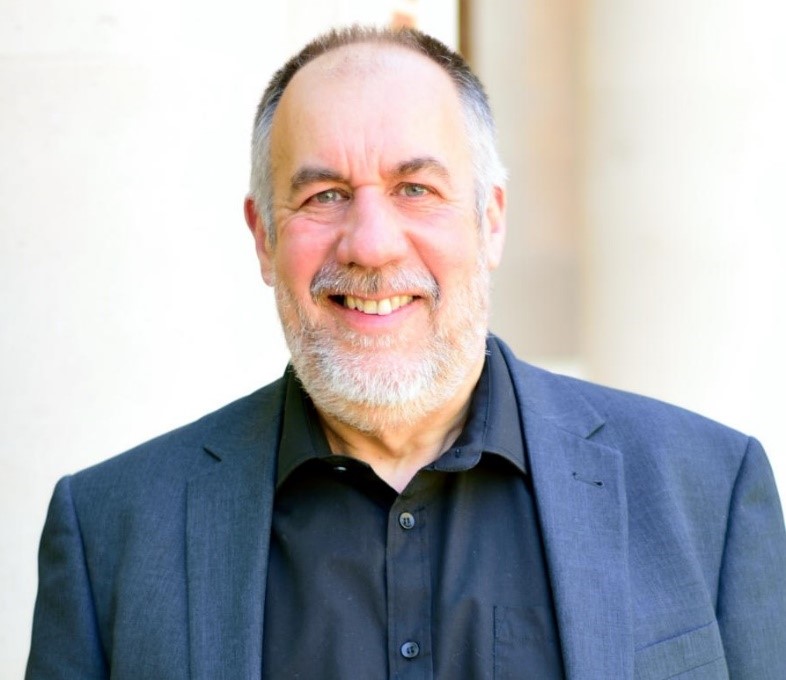
Wellington Health and Fitness Club is not your typical gym full of 20-somethings who leave after a couple of years.
The club places a keen emphasis on loyalty and longevity and prides itself on its diverse client base.
Around 60% of the club’s members are aged over 50 and more than 600 members have been there 10 years or more.
We speak to Ian Davis about the ingredients of the club’s success…
A club in high demand
Our club stands out because of the location and demographics within that location. We’re part of Wellington College which is in the borough of Bracknell (check spelling) and 85% of our members live within the RG45 postcode. It’s an older demographic which lives within this area, which is a big reason why most of our members are over 50.
The other possible reason is that we, like everybody else, use to hold a ‘Nifty Fiftys’ type of class as part of our off-peak membership. Of our total members, around 460 belong to the ‘Invincibles’, which is our 50-plus group.
They’re a mainstay of our off-peak programme and within this group, we’ve got people who’ve been with us for 20 to 30 years. They’ve grown with the club and seen a lot of changes in that time. In fact, 633 of our members (23%) have been with us for 10 years or more, which is very encouraging.
We’ve also created a waiting list and we haven’t advertised for new members for three years. All the new sales we’ve made during this time have been referrals and word of mouth.
Bucking the trend
We’ve almost flipped our off-peak and on-peak times round because of who our members are. Our ‘off-peak’ time between 8am and midday is as busy as any time between 6pm and 9pm.
The atmosphere here is very friendly, the staff are engaged and we’ve got a great mixture of the ‘older’ staff and younger staff. We have a nice balance – we’re not one thing or the other.
Incredibly, Wellington Health and Fitness Club has 136 members aged between 80 and 95. This unique set of gym-goers pose some unique challenges for Ian and his team, but challenges which they’re more than up to…
They’ll take part in a range of activities including tennis, bowls, swimming and certain types of aerobics.
Certain members of this age group struggle slightly with certain cognitive functions and can’t always recall what they did during the previous session.
They ask us to show them again and the staff have learned to expect this and respond accordingly. When this age group are in the gym, we’ll have more staff on hand to lend support and guidance in these areas.
The over 80s aren’t pumping iron in a gym, but they’re still getting valuable exercise and it’s extremely social. The social aspect is what keeps some of them going and they typify what we’re all about here.
Giving back
We make a point of rewarding our long-term members. We offer loyalty a discount of between 5 and 25% from 10 years up to 30 years, which plays a big part in retaining members.
A lot, if not all, of the staff are effective in engaging with members. A simple ‘Well done’ or ‘See you again next week’ goes a long way. If one of our members is unwell, our staff will sometimes give them a call to see how they are.
All of this motivates people that little bit more to keep coming back and I’m very proud of our retention rates to date.
Family feeling
As Dr Paul Bedford once said of gyms, it’s not the equipment, it’s not the facilities – it’s the experience. That statement epitomises what we’re about here at Wellington.
It’s not just about physical exercise – it’s also the stuff that goes on away from the fitness classes, whether it’s the ‘Invincibles’ or the other club members.
It’s the theatre trips, it’s the dinners, it’s the cruises. We’re very much a connected group and the club has that family feel to it.
There’s nothing more heart-warming than when you hear stories of someone who’s lost a loved one but says that our club is their second family. You can’t buy that feeling.
What makes over 50’s unique
I think they’re more communicative than maybe your more conventional gym-goer is. They like to talk to the staff, whereas other people are plugged in so you don’t get the same opportunity to build a rapport with them.
Some of our older members have got a great sense of humour. I’ll hear one of them say “Hi, how are you?” and the other member will reply “I’m still here!”
Whether it’s 10 minutes on a cross-trainer or playing squash, this is their time and it gives them a purpose to get up and so something.
They know that doing something is better than doing nothing and doing something with people you like is a bonus of the services we provide.
Reaping the benefits
Seeing the passion people have for exercise and improving their quality of life is probably the best thing about my job. I’ve worked at some great places with great staff and this place is right up there with them.
I’ve got so much respect for our members. They’re so driven to change their lives for their better and it’s a privilege to be a central part of that. I can identify with them to a degree, because I’m in that age category.
All of us in this industry seem to have a story to tell. If you go to conferences and seminars nowadays, no one’s telling you how to do things anymore, they’re just telling you what they do and you can relate to that.
Advice for personal trainers
I think you’ve got to have a year or two of learning the basics before you can train with the older generations.
You’ve got to view the older client in the most basic way – they could be your parents or grandparents. Treat them as you would treat a family member if they asked you for help.
You wouldn’t assign them squats, squat thrusts or star jumps and tell them to get on with it. You’d tailor their workout based on what you know about the individual.
These people are someone’s mother, father, grandmother and granddad. Our staff understand this and hopefully our customers feel this is reflected in the service we provide. We want them to feel part of one big community and I feel that’s what we’ve created.
Caroline Abrahams, Charity Director at Age UK
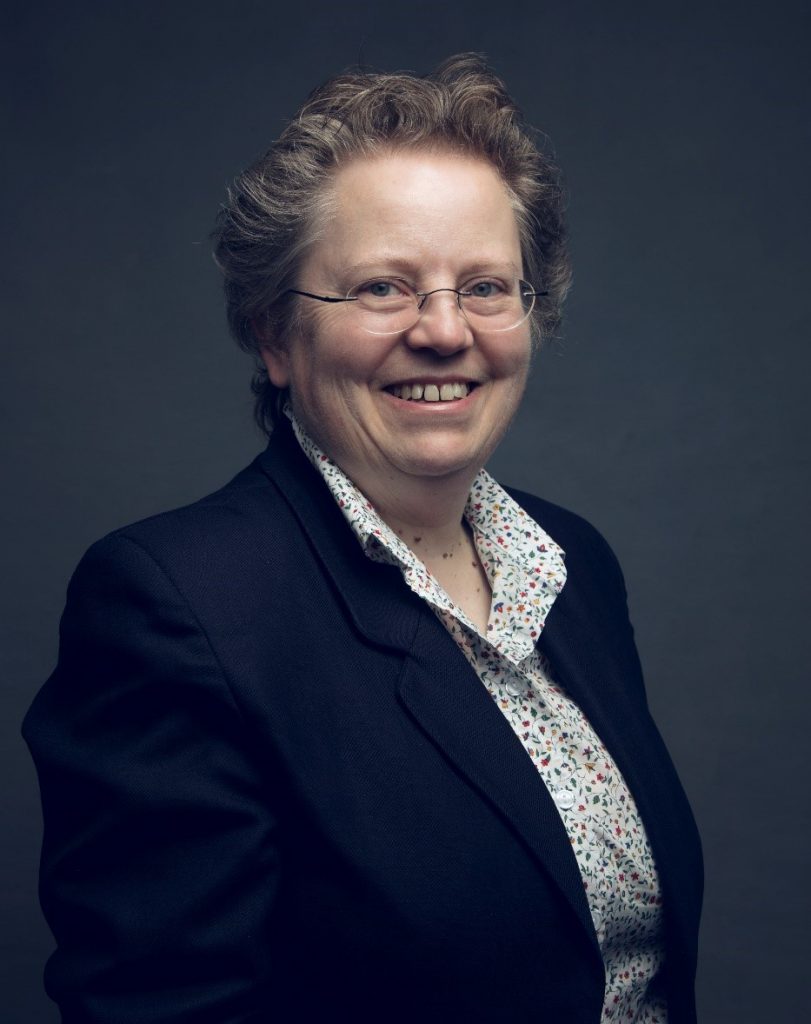
“There is overwhelming evidence about the benefits of keeping active no matter what your age or state of health and the new guidance echoes what Age UK’s own research shows; keeping physically active can help to improve general strength, benefit wellbeing and fitness, and can strengthen bones, joints and muscles.
“The important thing to remember is it’s never too late to start, even if that means just taking gradual steps towards moving more on a daily basis. Small amounts of exercise can make a big difference to our mental and physical health and there is something out there for everyone.
“Older people should never be made to feel that regular physical activity is not for them, even if they are living with certain health conditions or physical challenges. At the same time, it is important to stay safe, know your personal limits, regardless of your age and talk to your GP if you have any health concerns before starting something new, especially if you are not used to regular activity.”




Leave a Reply